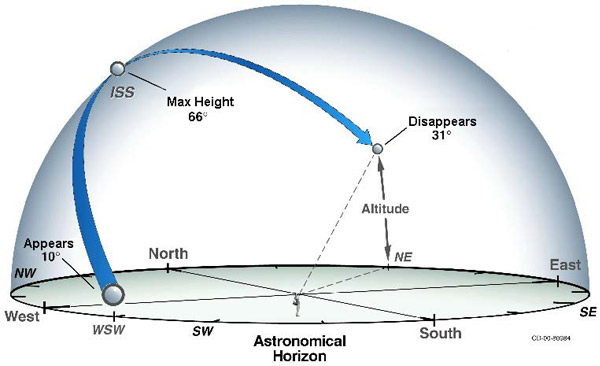"There are people up there? Real people? How did they get there? What do they eat?" and of course "How do they go to the bathroom?" These were the questions that came up the first night we went out to see the International Space Station (ISS).
Space is a vast place that is hard to comprehend. You see stars but are told the light you are seeing is from years ago. Perplexing. Some stars we see today on Earth have not been around for millions of years. Head scratcher. Jupiter the largest planet in our solar system is just a "bright star" as seen from Earth, but it really is more than 300 times the mass of Earth. Whoa.
Humans have long been fascinated by space travel. Children and adults often list astronaut as a career they would like to have when they grow up. One thing that brings the vastness of space a bit closer is to experience it.
Best Reader's On The Planet
See what I did there? I said it because it is true. Techlife's readers ask and inquire about many things. One reader loves the photos from NASA and sends amazing images every so often. A few months back the reader over some information about the ISS. I was busy and didn't think much about it. But I bookmarked it for reading later. Turns out it was a chance to see the ISS from anywhere on Earth.
The International Space Station is third brightest object in space as seen from Earth after the sun and moon. The difference is that it isn't found in a fixed area in the sky so the only way to see it is to know where and when to look. NASA offers up "Spot the Station" a website for just that.
How do I see the ISS?
There are a few key facts to understanding the ISS and Spot the Station. First off the ISS orbits the Earth at an inclination of 51.6 degrees. The ISS never travels past 51.6 degrees latitude north or south of the equator, so Techlife readers in Alaska won't see it directly over-head.
To be notified you visit Spot the Station and sign up for either an email or text message notification which is based on the location you provide. It appears any country, state/region and city work across the globe. Then you wait.
The cryptic message delivered from Spot the Station looks like:
“ SpotTheStation! Time: Wed Jan 30 6:45 PM, Visible: 2 min, Max Height: 64 degrees, Appears: WSW, Disappears NE. ”
The quick breakdown of this message is the time is based on your timezone. A cool aspect is that messages will always be for just after sunset or before sunrise by no more than a few hours. This is the best time to catch the sun reflecting off the space station and provides an easy to find object in the dark sky.
As the ISS is orbiting the earth it appears from below the horizon and then disappears back below the horizon. The visibility provides you with the length of time it will be easily seen. The longest I have seen is six minutes, but it was a cloudy overcast night that evening.
Spot the Station provides the maximum height in degrees, which combined with where it will appear and disappear gives you a viewing path to find the ISS. A simple hint, the horizon is zero degrees and straight above you is ninety degrees. I bisected those two spots to find the approximate 45 degree mark which helped. Also the letters of where it will appear and disappear relate to a compass markings.
What am I looking for?
The ISS is a small dot since it is more than 200 miles from the surface of the Earth. Seen with the naked eye it appears to be a shooting star. It moves pretty fast and evenly like an airplane. Mission Control calculates 4,600 sighting locations and suggests picking a nearby town if yours isn't listed. Due to how far it is from Earth your location need not be the exact city listed. Don't worry if you don't get notified for a while. Mission Control only includes what they consider "good" sighting opportunities. This means you might go a few weeks without getting notified.
It's a great family or co-worker event opportunity and a great chance to learn more about what they are doing up on the ISS too. Let the ISS staff and Techlife know what you see.
Originally published in the syndicated column Techlife by Dave Kaufman. http://bit.ly/V2XAPX








